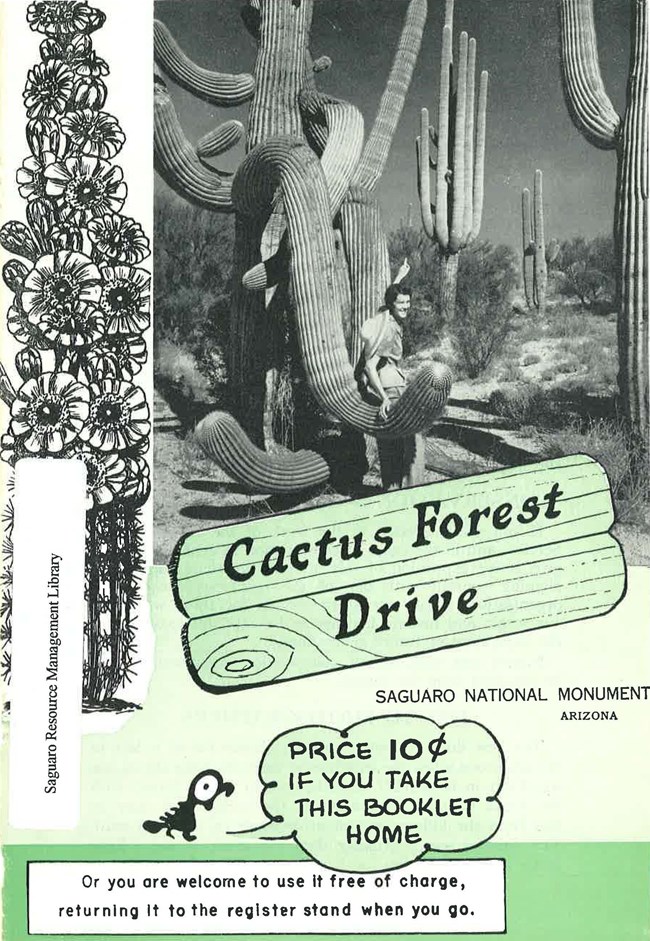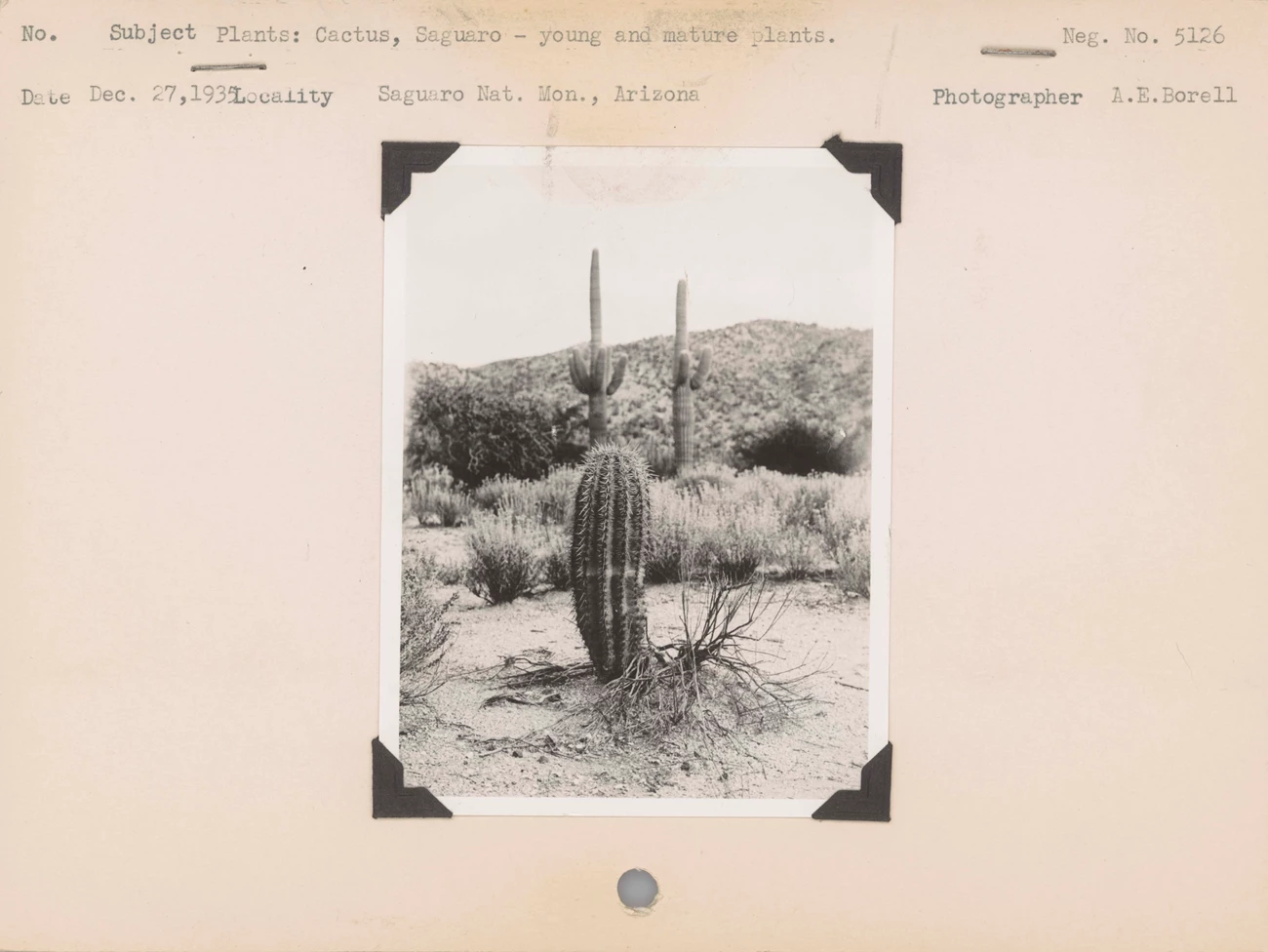Last updated: September 22, 2023
Article
Saguaro Cacti at Saguaro National Park

NPS
Visitors to the southern part of Arizona State have no doubt come across any number of curious plant species. Most are covered in prickly spines, some yield fruits, and almost all have flowers that bloom for short periods during the year. These plants with all their unique features have adapted over thousands of years to the Sonoran Desert, North America’s greenest desert. The Sonoran Desert covers most of southern Arizona, a small segment of California, and crosses the international border south into Mexico around the Gulf of California. Perhaps the most famous of all the strange plants in this lush desert environment is the mighty Saguaro (Carnegiea gigantea). The Saguaro’s desert habitat is preserved by several national park units in Southern Arizona, including Saguaro National Park outside Tucson, Arizona.
The Saguaro (pronounced sah-WAHR-oh) is an iconic and unmissable feature of the Sonoran Desert landscape, a dry habitat that appears preternaturally green for most of the year. The Saguaro lends itself to this environment in no small way; a healthy Saguaro is entirely green with a vertical-ribbed texture that casts interesting shadows around the trunk of the plant. This produces a fluting pattern like the fluting on column shafts in classical architecture. The pattern is caused by the Saguaro’s interior hardwood ribbing structure. The exterior columnar fluting also accentuates the plant’s general appearance: Saguaro frequently grow to heights beyond 30 feet. As most Sonoran Desert plants are stunted and hug the ground, the Saguaro is the tallest and therefore the most prominent plant in its environment. Its height has led to its nickname, the king of the cactus family.
Not only do Saguaro grow to heights beyond other cactus specimen, they also have extensive lifespans. The average age of Saguaro Cacti is 150 years, with some occasionally reaching 200. It may take a Saguaro 70 years to reach six feet in height. This is generally the age at which Saguaro start to develop thick branches, usually referred to as arms, which extend away from the center of the trunk.

NPS / Todd M. Edgar
Summer temperatures in the Sonoran Desert often top 120 degrees Fahrenheit, which affects the growth of the Saguaro Cactus. Saguaros will grow faster in hot, wet environments than in hot, arid ones. The eastern part of the Sonoran Desert, where Tucson and Saguaro National Park are located, is wetter than the western half of the desert because of prevailing weather patterns which bring warm, humid air up from the Gulf of California. The eastern half of the Sonoran Desert experiences an annual monsoon season in late fall that can last until early spring. The monsoon rains come in brief bursts when up to five inches can fall in little over half an hour. The Saguaro has evolved to store water from these short rainstorms for long periods of time, allowing individual plants to survive long drought periods. A Saguaro will visibly expand after absorbing rainwater. Saguaros can also survive the occasional winter frost or snowfall, which is rare in the Sonoran Desert.
The Saguaro is frequently compared to a tree – with an identifiable trunk and arms reminiscent of tree branches, but its appearance is more often described as anthropomorphic. A Saguaro’s arms, which usually grow upright on opposite sides of its trunk, further illustrates the connection between the human form and the king cactus. People often describe Saguaros found in the desert in human terms, with their arms raised in greeting or else hanging in defeat. For centuries before the Spanish first traveled through the Sonoran Desert, native peoples developed this human-centric view of the Saguaro. The various O’odham peoples – the Tohono, Akimel and Hia’Ced – still refer to individual specimen as ancestors and family members. Essentially, the O’odham peoples view the Saguaro as human. It is central to many of their legends and religious ceremonies and they have worked to increase protections on the species.
Native peoples in the Sonoran Desert have long utilized almost every part of the Saguaro. The very name “Saguaro” is in fact a Hispanized version of the O’odham word Ha:san (alternately Ha:sañ, Ha’san). O’odham peoples ate Saguaro fruit or else turned it into a ceremonial wine the consistency of syrup and ground up Saguaro fruit seeds, which are high in protein. Ribs from deceased Saguaro were historically used as construction materials, to make tools or traps, and even to start fires. The lightweight ribs can still be seen utilized in examples of traditional architecture at Saguaro National Park and nearby Organ Pipe Cactus National Monument. Ramadas, the wattle-and-daub jacal and later adobe buildings traditionally used the saguaro rib. Saguaro ribs are still used for harvesting Saguaro fruit by O’odham peoples. A single, long rib is tied together with a smaller rib cross bar, and is used to knock fruit from the tops of Saguaro. This tool is called a kukuipad (or kuipud) and is reminiscent of today’s industrial fruit pickers. Later Spanish and Anglo-Americans settlers have also incorporated the rustic Saguaro rib into furniture in a Southwestern style.

NPS / Tani Hubbard
In large part because of its respected place among native peoples, the Saguaro is a protected plant in Arizona. State-wide cactus laws prevent theft or destruction; if a Saguaro interferes with private construction projects, state permits are required to move the specimen out of the way. Additionally, the Saguaro’s white blossoms are the Arizona state flower. Visitors frequently flock to the southern part of the state between May and June, when the flowers are in bloom. The state is also home to several festivals that celebrate the Saguaro’s place in regional folk traditions. Annual indigenous ceremonies surround the harvesting of Saguaro fruit in the middle of summer. The fruit harvest marks the beginning of the O’odham new year.
In recent years, the native habitat of the Saguaro has fluctuated as the Sonoran Desert grows hotter and drier with a changing climate. Saguaros thrive in hotter weather, and scientists have predicted an expansion to the future limits of the plant’s range. Climate change, however, also brings more uncertainty. In 2020, a record number of wildfires killed thousands of Saguaros. Invasive species like buffelgrass have created a more flammable landscape, fueling many of these fires.
Additionally, Saguaros and the rest of the Sonoran Desert ecosystem rely on annual fall monsoons. Because of climate change, those monsoons have become less predictable. A record amount of rain in 2018 caused widespread flooding and destruction to the desert landscape; other years the rains haven’t come at all. The long-growing Saguaro is far from an endangered plant species, but its home in Southern Arizona’s Sonoran Desert is threatened by climate change. To combat the effects of a changing climate on the Saguaro, Saguaro National Park partners with a number of other Tucson-based organizations in research and education.


